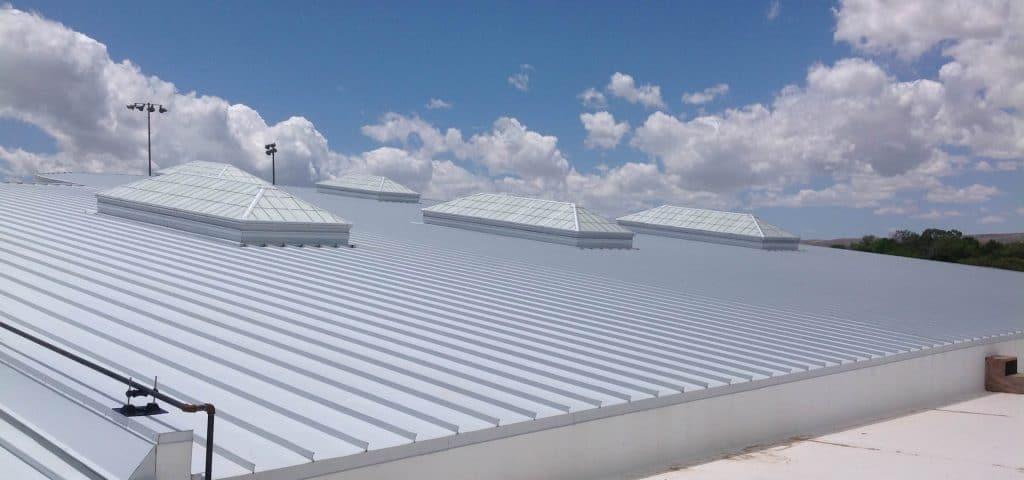A commercial roof plays a key role in any business.It protects the building from harsh weather. It keeps operations running safely and smoothly. But even strong roofs need regular inspections. Small issues can turn into expensive repairs fast. That’s where a commercial roof inspection comes in.
Regular inspections help Fort Worth TX property owners spot early roof damage, assess structure, and plan maintenance. Whether it's a warehouse or office, this guide covers all you need to know. Need expert help? Tru-Green Roofing for your inspection today.
Why Are Commercial Roof Inspections Important?
Ignoring your commercial roof’s condition can lead to unexpected issues like leaks, insulation damage, or even structural failure. A commercial roof inspection ensures that small problems are caught early, allowing for preventive maintenance that can extend the life of your roofing system and save you money in the long run.
Inspections also help ensure compliance with warranty requirements and local building codes. If your roof is under warranty, regular documentation from inspections is often needed to validate any claims you make for repairs or replacements.
When Should You Schedule a Roof Inspection?
Timely inspections are key to maintaining your roof’s longevity. Here are the most common times to schedule one:
- After a major storm – Heavy winds, hail, or snow can cause hidden damage.
- Before and after winter – Seasonal inspections help identify weather-related wear.
- Before buying or selling property – Inspections provide a clear picture of roof condition.
- Twice annually – A biannual inspection (spring and fall) is a standard best practice.
What Happens During a Commercial Roof Inspection?
A thorough commercial roof inspection follows a detailed process to assess all elements of the roofing system. Here’s a breakdown of what inspectors typically evaluate:
1. Visual Assessment
The inspector begins by checking the roof surface for visible signs of damage, including cracks, punctures, water pooling, blistering, or membrane wear. They also examine rooftop equipment, flashing, and drainage systems.
2. Structural Inspection
Inspectors assess the roof’s support structures, looking for sagging, rust, or signs of structural failure. Proper slope and load-bearing capacity are also evaluated.
3. Interior Check
The underside of the roof is inspected for leaks, water stains, mold, or insulation deterioration. This helps confirm whether moisture has penetrated the roofing system.
4. Moisture Detection
Advanced inspections may include infrared scanning or moisture meters to detect trapped water beneath the surface—something not visible to the naked eye.
5. Drainage System Evaluation
Inspectors review all drains, downspouts, and gutters to ensure water is flowing off the roof efficiently. Clogged or poorly placed drains can lead to pooling and water damage.
Types of Commercial Roofing Systems
Different materials have unique inspection needs. Common commercial roof types include:
- TPO and PVC: Thermoplastic membranes that need seam and puncture checks.
- EPDM: Rubber roofing that may develop shrinkage or seam separation.
- Built-Up Roofing (BUR): Requires inspection of gravel and asphalt layers.
- Metal Roofing: Needs checking for rust, panel alignment, and fastener issues.
- Modified Bitumen: Inspect for cracking, blistering, and lap adhesion.
Knowing the type of roofing system helps the inspector determine what specific issues to look for and recommend tailored maintenance strategies.
Key Benefits of Regular Commercial Roof Inspections
Scheduling regular inspections is a proactive way to manage your building’s health. Here are the top advantages:
- Prevents expensive repairs by catching issues early.
- Extends roof lifespan, maximizing ROI.
- Improves energy efficiency by identifying insulation and ventilation problems.
- Keeps occupants safe from water damage, mold, or roof collapse.
- Maintains property value and protects your investment.
How to Prepare for a Commercial Roof Inspection
Before your scheduled inspection, clear any debris from the roof and ensure safe access points are available. Prepare previous inspection records and maintenance logs to give the inspector full context of the roof’s history. Doing so ensures a more accurate and insightful inspection.
What Happens After the Inspection?
After the inspection is completed, you’ll receive a detailed report outlining:
- Areas of concern
- Photographs and documentation
- Recommended repairs or maintenance
- Estimated timeline and budget
This report becomes the basis for your action plan. If repairs are necessary, addressing them promptly helps avoid more significant issues later on.
Final Thoughts
A commercial roof inspection is not just a checklist—it’s a safeguard for your property, budget, and business operations. With routine inspections, you can plan for maintenance instead of reacting to emergencies. Stay proactive, protect your investment, and make your roofing system last for years to come.
FAQs
- How often should a commercial roof be inspected?
Ideally, you should have your commercial roof inspected twice a year—once in the spring and once in the fall—and after major storms. - How long does a commercial roof inspection take?
It depends on the size and type of roofing system, but most inspections take between 1 to 3 hours. - What are the most common issues found during inspections?
Common issues include punctures, ponding water, cracked flashing, and membrane shrinkage or separation. - Is an infrared scan necessary for all inspections?
Not always, but infrared or moisture scanning is helpful for detecting hidden water damage that isn’t visible on the surface. - Can I inspect my commercial roof myself?
While basic visual checks can be done, a professional inspection is recommended for a thorough evaluation and proper documentation.
